On August 10th, not long after massive explosions rocked one of Russia’s principal airbases in Crimea, far from the front lines of Russia’s invasion of Ukraine, reports spilled in about blasts heard at a base in Belarus. Ziabrovka Airbase, which sits just 14 miles north of the Ukrainian border, was the source of the nighttime blasts that rattled locals nearby. Rumors subsequently swirled around the possibility that whatever Ukraine used to hit Russia’s Crimean airbase was now being used to strike an installation that is known to be used to support Russia’s invasion. Now we have the first satellite images that can shed some light on what exactly happened there.

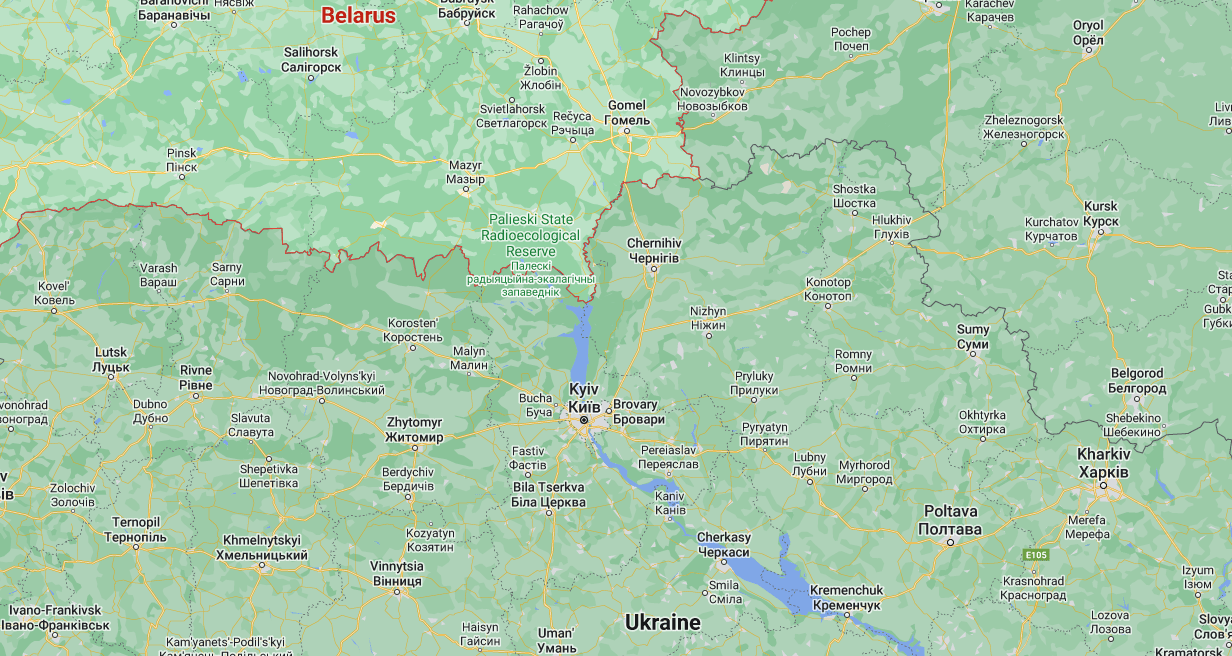
Not long after the news of the blasts at Ziabrovka circled the globe, the government in Belarus, which is very tightly allied with Russia, made an announcement that a vehicle caught fire during an inspection run after its engine was replaced and that nobody was hurt in the incident. Video claiming to show the fire from the incident also began to surface. Many were puzzled as to how an engine fire could have caused what was described as a series of at least eight loud explosions and glowing fires.
Satellite imagery, taken on August 12th, that The War Zone obtained from Planet Labs shows some changes at the base over the last week and a half, but most importantly, it shows a huge scorch mark on the base’s runway that was not there before. It also shows the remnants of a brush fire in a field adjacent to the runway. Only a single helicopter was seen at the base when the satellite image was taken, although it is not known for major fixed-wing operations.

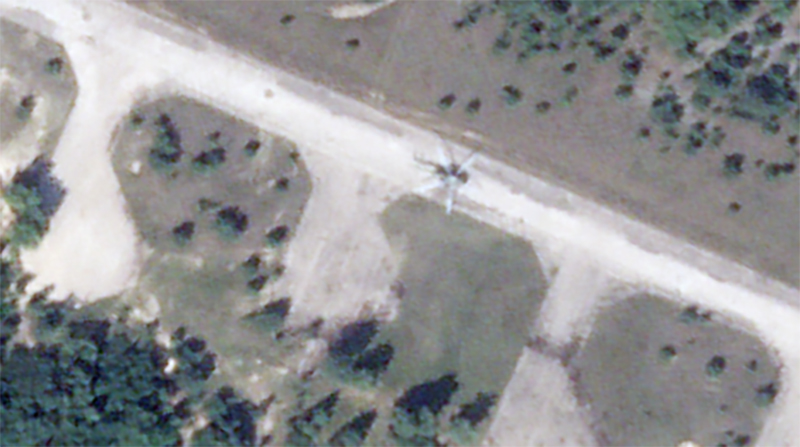
In addition, two air defense systems have been deployed mid-field on raised mounds. These were not present 10 days prior, although they have been seen in months past.
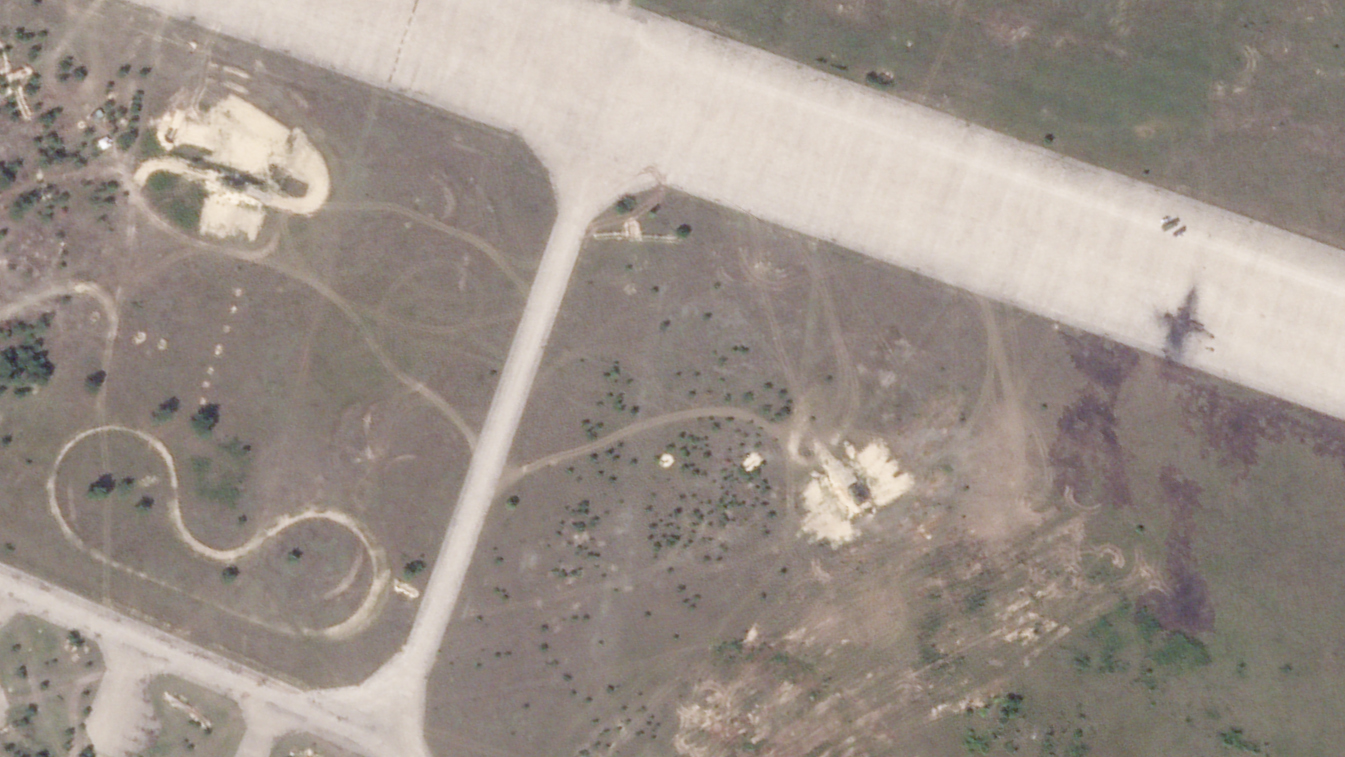
Other major points of interest appear largely untouched, including a vehicle staging and supply area near the main apron, elevated radar/electronic support systems and air defense encampments on the western and eastern ends of the field, and the base’s large fuel storage farm on its southeastern edge.
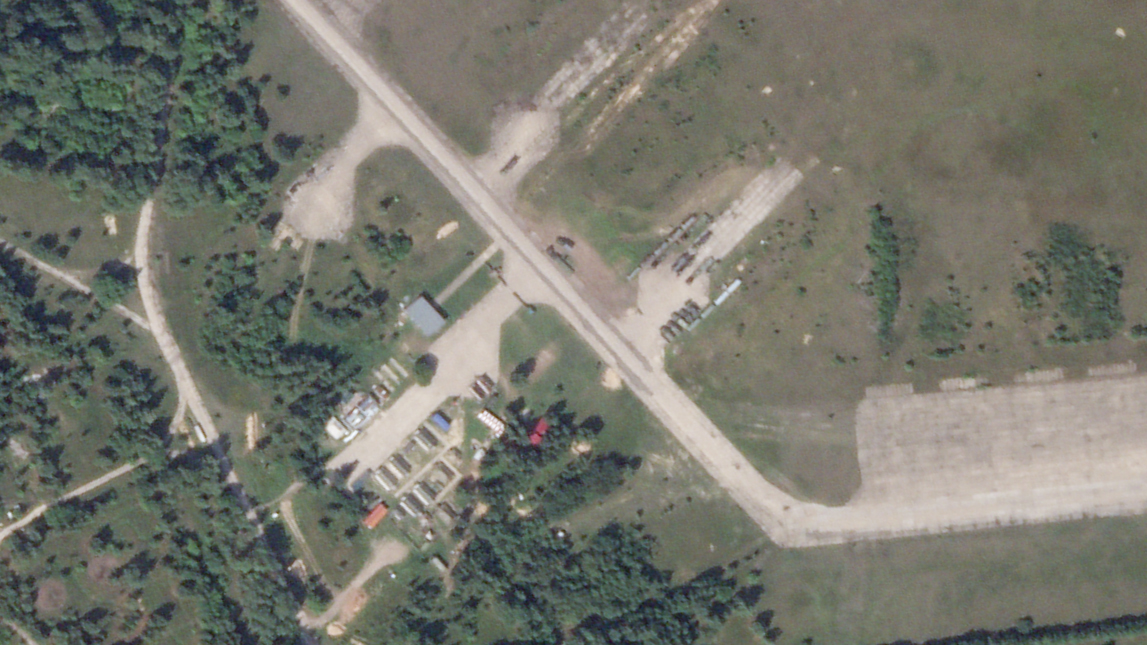
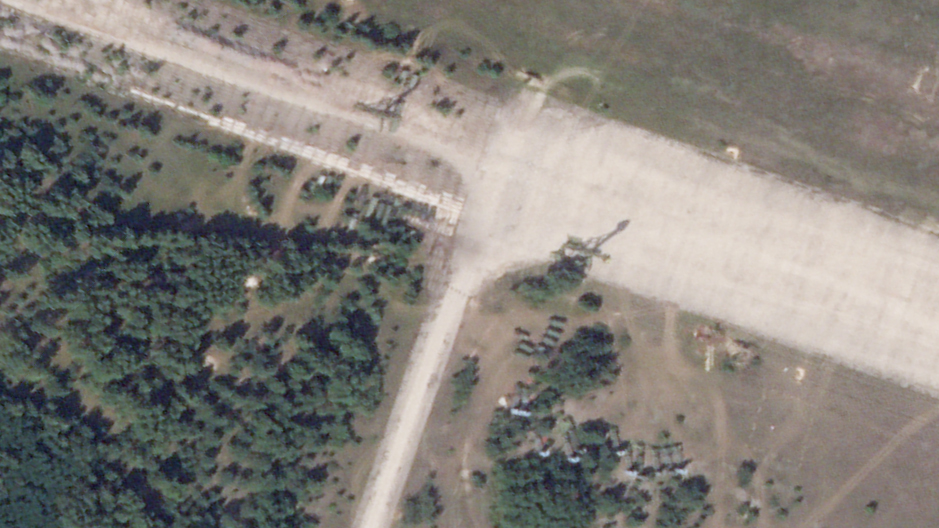
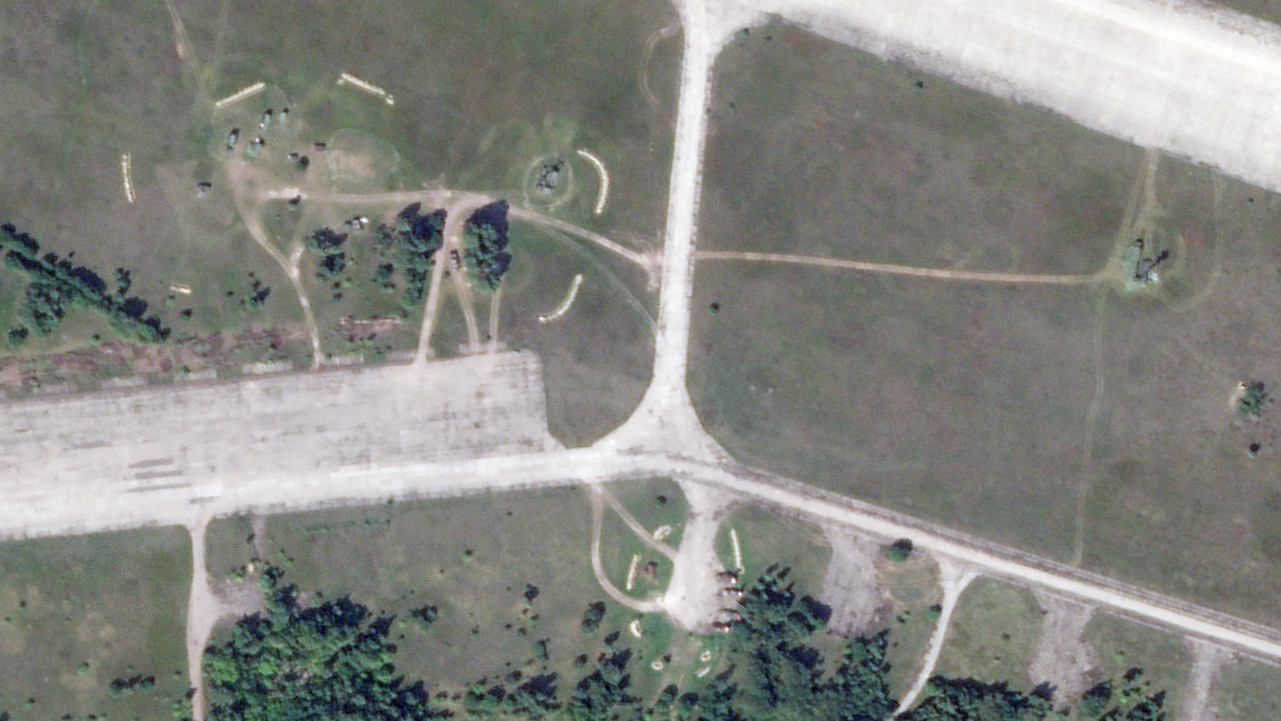

During the Cold War, Ziabrovka, also sometimes written Zyabrauka and previously known as Pribytki Airbase, was home to bombers, such as the Tu-16 Badger and the Tu-22 Blinder, as well as reconnaissance variants of those types. The independent Belarusian Air Force appears to have ceased regular flying operations there in 1994, when the last Tu-22s were sent back to Russia for scrapping.
Russian helicopters and ground forces were observed gathering at the base in the weeks leading up to the all-out invasion of Ukraine. Airmobile operations staged from locations in Belarus and Russia were a key feature of the opening phases of the conflict, which focused on attempted lightning-quick seizures of critical points, including Hostomel Airport outside of Kyiv. Those initial pushes all failed spectacularly.
As the conflict in Ukraine has wound on, while helicopter activity continues there, Ziabrovka looks to have transformed more into a missile base and staging area for ground forces.
Russian air defense batteries equipped with S-400 long-range surface-to-air missile systems have appeared at the base, as have Pantsir-S1 point defense systems. Various radars, including 92N6E fire control types and 5H66s optimized for spotting and tracking targets at low altitude, both on 40V6 trailer-mounted elevated masts, have been observed there in the past six months or so.
Russian units armed with Iskander-M short-range ballistic missiles have also been stationed there.
What exactly happened at Ziabrovka earlier this week remains unclear, but the vehicle that exploded — possibly an aircraft or launcher — must have been a large one and full of fuel or munitions to cause that type of scarring. If it was some sort of strike, the target would appear to have been a single vehicle on the runway, which, depending on the asset and means of attack used, could be puzzling considering all the static infrastructure has been left untouched.
There have been concerns from the very beginning of Russia’s all-out invasion of Ukraine that Belarusian forces could be preparing to join the conflict on Moscow’s side. Those worries have ebbed and flowed over the last six months. Longtime Belarusian dictator Alexander Lukashenko has only grown closer to Moscow in that time, with Moscow saying they would give nuclear-capable Iskander-Ms to Belarus.
While we don’t know what occurred on the base on the night of August 10th, we now know something definitely did occur, and whatever it was left quite a mark.
Updated 7:40 PM EST:
Maxar Technologies has now released additional satellite imagery of Ziabrovka Airbase, taken today, with an even clearer look at the burned area on the runway. In this additional imagery, we can see an array of what appear to be military vehicles and/or other heavy equipment, including a large crane, around the scorch mark.
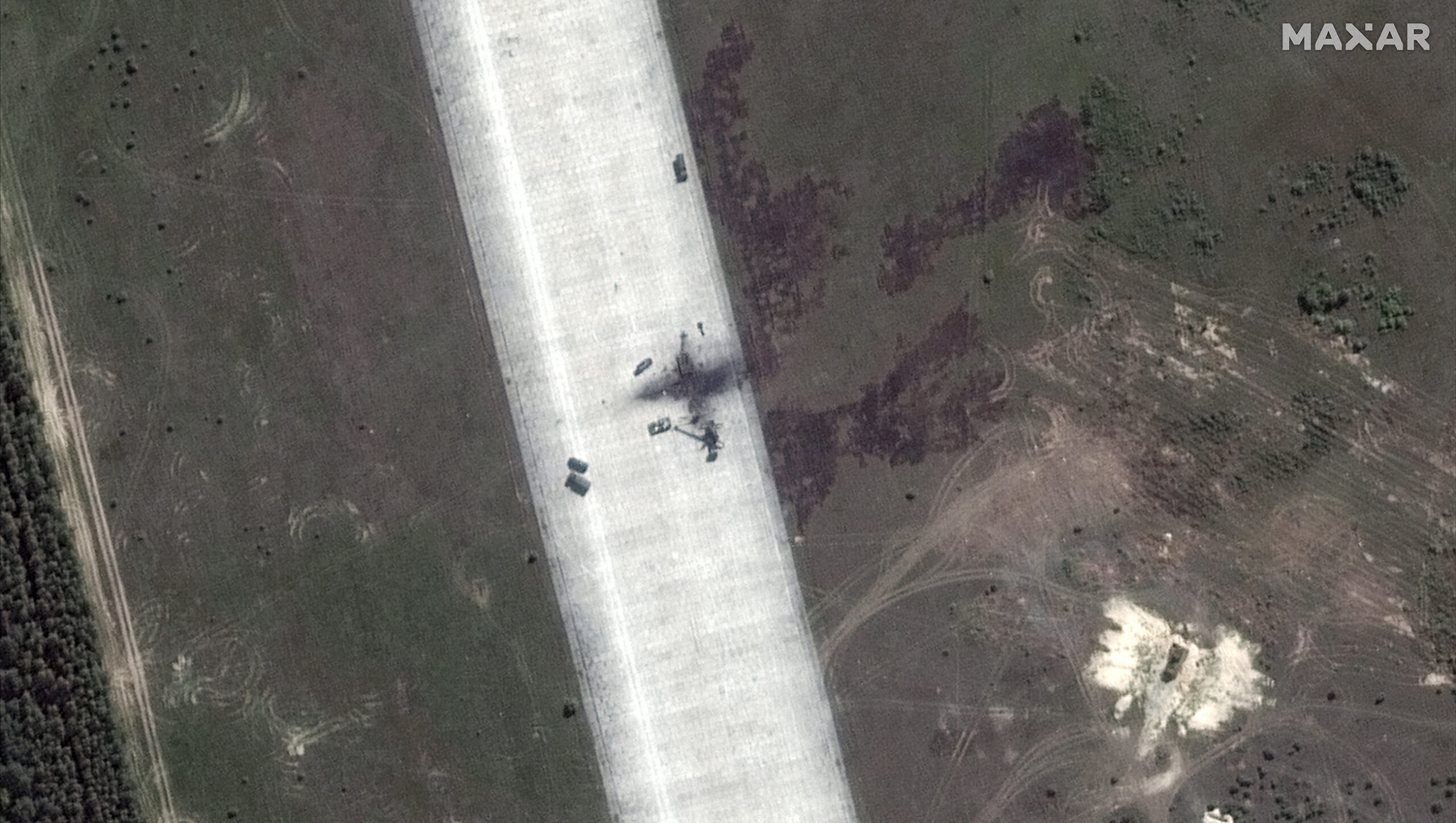
One vehicle or piece of heavy equipment right on the scorch mark appears to be burned. It is not clear whether or not any of the other vehicles that are visible were directly involved in the incident or are simply part of some of a subsequent recovery or removal effort. From this imagery is still difficult to say what was the cause. An engine fire alone would not have caused this much damage, though it could have triggered secondary explosions or fires.
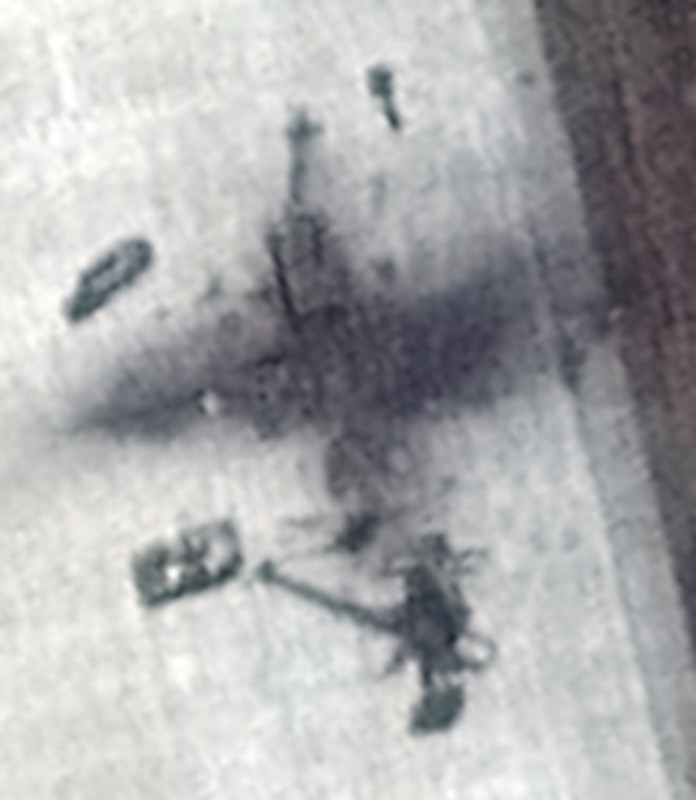
As already noted, the base has been used as a launch point for Iskander-M short-range ballistic missiles and hosts air defense systems of various kinds. So, while we can say for certain what happened, something like a munitions malfunction or handling accident could be another possibility.
An attack or strike of some kind still can’t be ruled out, either. It’s worth noting that there is strong evidence that the Ukrainian Air Force now has some capability to launch U.S.-made AGM-88 High-speed Anti-Radiation Missiles (HARM), as you can read more about here.
The AGM-88, like other anti-radiation missiles, is primarily designed to zero in on enemy signal emitters, especially radars associated with air defense systems, and disable or destroy them. Though there is no indication one way or another that a HARM caused whatever happened at Ziabrovka, they would have the range to be launched at the base, which is full of suitable targets, even from within Ukrainian airspace.
Contact the author: Tyler@thedrive.com
